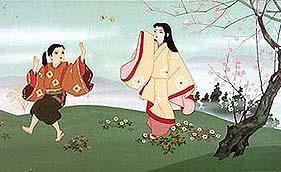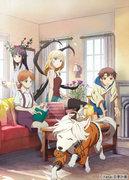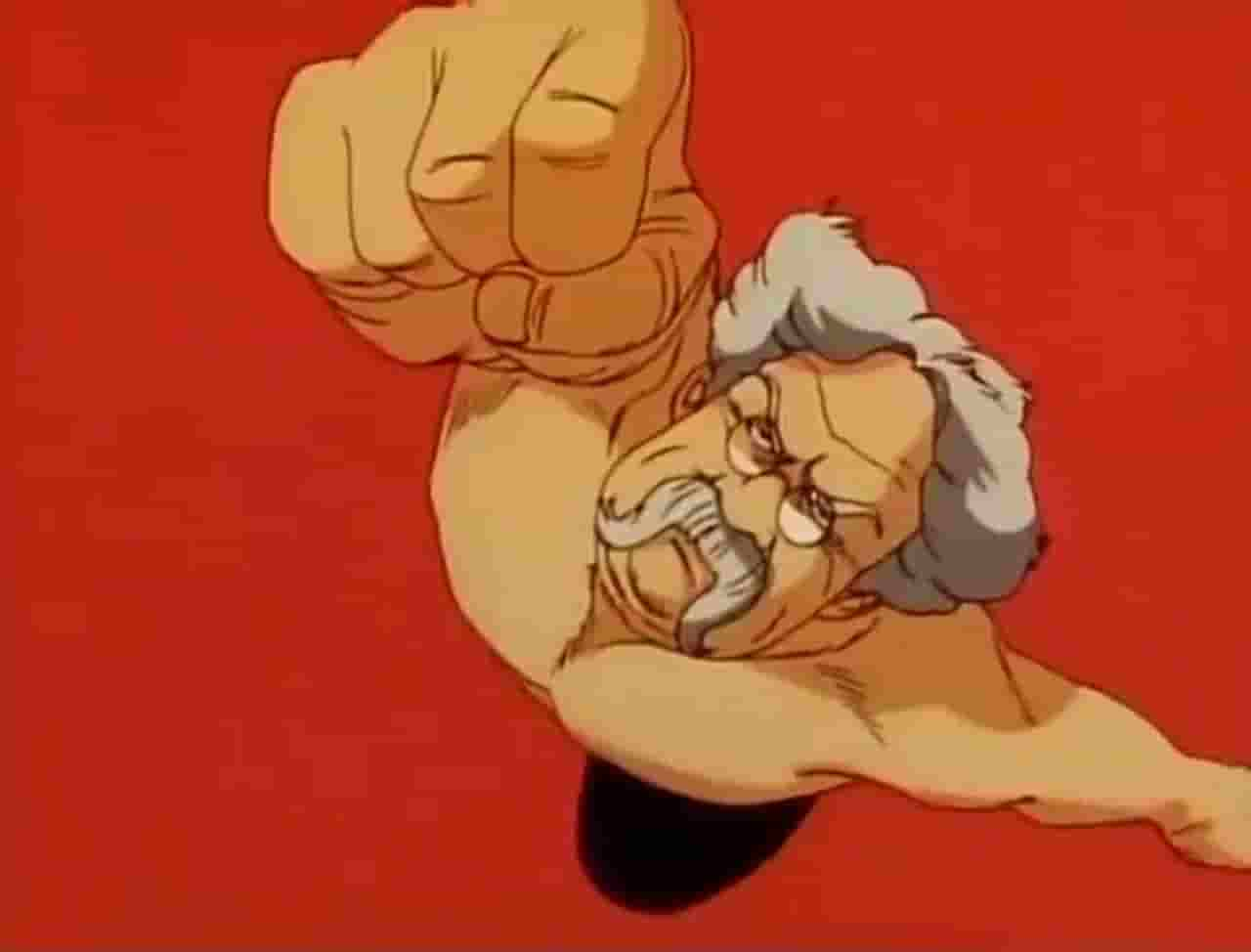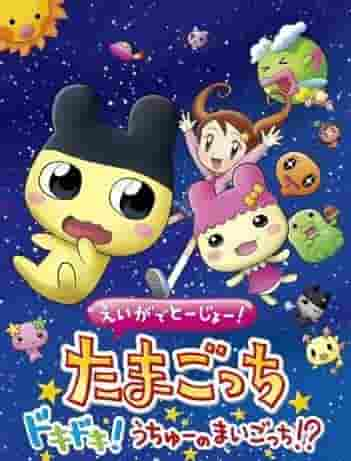The appeal and evaluation of "Anju and Zushiomaru": New possibilities for cooking anime

"Anju and Zushiomaru": A Toei animation masterpiece depicting the love between siblings in the Heian period■ Public Mediatheater ■ Original Medianovel ■ Release dateJuly 19, 1961 - January 1, 0000 ■Distribution companyToei ■ Eirin Number12085 ■Frequencies83 min ■ Number of EpisodesEpisode 1 ■Original StoryMori Ogai ■ ProductionToei Animation ■Works©Toei ■ StoryDuring the Heian period, Judge Iwaki, who rules the province of Mutsu, is framed for a crime he did not commit and punished by Onikura Mutsu no Kami. His mother, Anju, and Chushiomaru are left behind to escape from Onikura's persecution and travel to Echigo, but are deceived by human traffickers and separated from their mother and son. Anju and Chushiomaru are sold to the greedy and ruthless Sanshodayu and live a hard life, but with the help of his sister Anju, Chushiomaru, who risks her life, is able to escape from Sanshodayu. Chushiomaru grows up fine under the protection of the Kanpaku, and when he is promoted to Mutsu no Kami, he travels to Sado in search of news of his mother, where he is finally reunited with her. ■ExplanationThis is the fourth full-length color manga to commemorate Toei's 10th anniversary and was adapted by Tanaka Sumie from Mori Ogai's "Sansho the Bailiff." It is a masterpiece that celebrates the beautiful and brave love between a brother and sister, based on an ancient folklore. Toei stars were cast as models and voice actors for the characters, and some of the animation was done using the "live action method," in which the performances of the models were used as reference for the animation. It is a poetic masterpiece with elegant screen production reminiscent of Yamato-e paintings, which clearly conveys the delicate sensibilities and colorful aesthetic sense of the Japanese people, as well as their deep spirituality. ■Cast・Anju/Sakuma Yoshiko・Zushiomaru (childhood)/Sumita Tomohito・Zushiomaru (youth)/Kitaoji Kinya・Iwamoto Judge/Usami Junya・Yashio/Yamada Isuzu・Sansho Tayu/Higashino Eijiro・Jiro/Taira Mikijiro・Saburo/Mizuki Jo・Fujiwara Michizane/Yamamura Satoshi・Ayahime/Matsushima Tomoko・Onikura Mutsunokami/Mishima Masao・Ando Sanai/Hanazawa Tokuei・Kikuno/Tone Harue・Gonroku/Tomita Nakajiro・Yamaoka Tayu/Nagata Yasushi・Jinpachi/Kiyomura Koji・Tatsumune/Ushio Kenji・Gatekeeper/Oda Masao・Priest/Akashi Ushio・Ayahime's maid/Arai Shigeko・Outlaw/Mori Gentaro・Messenger/Masuda Junji・Chonko/Muto Reiko・Mok/Ohira Toru ■ Main staff・Production manager / Seiichi Moro ・Screenplay / Sumie Tanaka ・Animation supervisor / Sanae Yamamoto ・Direction / Yasuji Yabushita, Yugo Serigawa ・Key animation / Akira Daikuhara, Koji Mori, Yasuo Otsuka, Hideo Furusawa, Masao Kumakawa, Daikichiro Kusube ・Animation / Shuji Konno, Masatake Kita, Reiko Okuyama, Jun Nagasawa, Kao Terachi, Michihiko Yoshida, Taku Sugiyama, Toyohira Horikawa ・Art / Tori Seiichi Izuka・Background / Mataji Urata, Saburo Yokoi, Hideo Chiba・Color design / Reiji Koyama・Tracing / Mitsuko Shindo, Fumie Motohashi, Masako Miyazaki, Nobuko Yoshida・Coloring / Fukiko Hayashi, Junko Kawashima, Sachiko Nakajima・Finishing inspection / Saburo Niiro・Cinematography / Harusato Otsuka, Kazuo Nakamura, Takaaki Azuma・Editing / Shintaro Miyamoto, Ikuzo Inaba・Music / Tadashi Kinoshita, Hajime Kaburagi・Sound recording / Masatoshi Kuga, Takeshi Mori・Sound effects / Hajime Kimura・Research / Koji Fukiya・Production / Toei Animation ■ Main Characters Anju is a beautiful and elegant girl who cares for her younger brother. She was deceived by a human trafficker and sold to Sansho Dayu together with her younger brother, Zushiomaru. ■ Theme songs and musicTheme song and lyrics by Tadashi Kinoshita Sung by Tomoko Matsushima, Keiko Nozawa, Coro Stella Choir The appeal and evaluation of "Anju and Zushiomaru""Anju and Zushiomaru" is a feature-length animated film released by Toei in 1961, based on Mori Ogai's novel "Sansho Dayu." The film was produced to commemorate Toei's 10th anniversary and is also known as the fourth full-length color manga. This film, which depicts the love between a brother and sister in the Heian period, captivated many audiences with its beautiful visuals and deep story. The story begins with Iwaki Hangan, ruler of Mutsu Province, being framed for a crime and exiled as a result of a scheme by Onikura Mutsu no Kami. The mother and children left behind head to Echigo to escape Onikura's persecution, but are deceived by a human trafficker, and Anju and Zushiomaru are sold to Sansho Dayu. The siblings are forced to live a harsh life, but thanks to Anju's devoted love, Zushiomaru is able to escape and grows up under the protection of the regent. Eventually, Zushiomaru, now Mutsu no Kami, travels to Sado in search of news of his mother, and the story ends in a moving reunion. The greatest appeal of this work is the beautiful story of the bond between siblings and the beautiful visuals that support it. In particular, the scenes depicting Anju's dignity and Zushiomaru's purity will touch the hearts of the audience. In addition, the depictions of the interactions with animals and nature also evoke the atmosphere of the Heian period, giving the work a poetic feel. In terms of production, it is notable that the series partially adopted the "live action" method, in which Toei stars were used as models for voice actors and their performances were used as reference for the animation. This enabled the characters to express their emotions more realistically, adding depth to the story. The elegant screen production, reminiscent of Yamato-e paintings, and the color design, which reflects the delicate sensibilities and aesthetic sense of the Japanese, also enhance the appeal of the series. The cast is a star-studded lineup, including Ryoko Sakuma as Anju, Tomohito Sumita and Kinya Kitaoji as Zushiomaru, and Eijiro Higashino as Sansho Dayu. Their performances as voice actors are also an important factor in enhancing the quality of the work. The production team is made up of experts in various fields, including Sumie Tanaka, who wrote the script, and Tadashi Kinoshita and Hajime Kaburagi, who wrote the music. Tadashi Kinoshita's music in particular plays an important role in bringing out the emotion of the work. The theme song, "A Song of Longing for a Child," is sung beautifully by Tomoko Matsushima, Keiko Nozawa, and the Colosseum Choir, further enhancing the moving feeling of the story. "Anju and Zushiomaru" was loved by many audiences for its beautiful story of love between siblings in the Heian period, its beautiful visuals, and the high production quality of its stellar cast and staff. With a story based on ancient folklore and visuals that reflect the sensibilities and aesthetic sense of the Japanese people, this work is still loved by many people today as a poetic masterpiece. Recommended points of "Anju and Zushiomaru""Anju and Zushiomaru" is a beautiful story about the love between siblings in the Heian period, and is a work that is attractive for its beautiful visuals. Below are some points that make this work recommended. 1. Beautiful visualsThe elegant composition of the picture, reminiscent of Yamato-e paintings, and the color scheme that reflects the delicate sensibilities and aesthetic sense of the Japanese, give the work a poetic feeling. In particular, the depictions of nature and the scenes of interaction with animals will draw the viewer in, evoking the atmosphere of the Heian period. 2. A moving storyThis beautiful story about the bond between siblings will touch the hearts of audiences. Anju's devoted love, Zushiomaru's growth, and the touching ending where he is reunited with his mother will touch many hearts. 3. A great cast and crewThe series features a star-studded cast including Yoshiko Sakuma, Tomohito Sumita, Kinya Kitaoji, and Eijiro Higashino. In addition, experts in various fields such as Sumie Tanaka who wrote the script, and Tadashi Kinoshita and Hajime Kaburagi who wrote the music have come together to raise the quality of the work. 4. Historical valueThis work, which commemorates Toei's 10th anniversary and is also known as the fourth full-length color manga, is also of great historical value. The story, based on ancient folklore, gives a sense of the depth of Japanese culture. 5. The beauty of musicThe music by Tadashi Kinoshita plays an important role in enhancing the emotional impact of the work, and the theme song "Koko wo Koiuru Uta" (Song of a Lover) is beautifully sung by Tomoko Matsushima, Keiko Nozawa, and the Colosseum Choir, further enhancing the moving impact of the story. From the above points, I recommend "Anju and Zushiomaru" as a poetic masterpiece that combines beautiful visuals, a moving story, a gorgeous cast and staff, historical value, and beautiful music. If you haven't seen this movie yet, please give it a watch. I'm sure you will be moved by its beauty and emotion. |
<<: "Mane": The appeal and evaluation of Minna no Uta
>>: Balloon Song: A thorough analysis of the appeal and emotion of this song for everyone
Recommend
JOKER Marginal City: A thorough analysis of the fascinating dark hero and his worldview
"JOKER Marginal City": The appeal of th...
The movie "Aquaman 2: The Lost Kingdom" has been confirmed to be introduced into China, and the release date is yet to be determined
On November 3, DC officially announced that the m...
HataR Kids Myham Group: A thorough evaluation of the appeal and educational value of children's animation
HataRakdos My Hamster Group - Hamster's adven...
The appeal and evaluation of "Dekkai Tot March": Anime song that everyone loves
"Dekkai Tot March" - Looking back on th...
HBO's The Last of Us new set photos leaked, fungal infection scene exposed for the first time
New stills from the HBO series The Last of Us hav...
The tights are curvy! EVA's new movie version of the one-eyed Asuka is hand-made and published
The highly anticipated "Neon Genesis Evangel...
Henry Cavill and the creators explain the world of The Witcher: Brutal and Terrible
Recently, Netflix's new drama "The Witch...
"Honor of Kings: Glory of the Broken Moon" is scheduled to be updated every Saturday in January 2024
The official Weibo account of Honor of Kings anno...
"Detective Conan" New Year special original animation main art released and will be broadcast in January 2020
"Detective Conan"'s New Year specia...
The appeal and reviews of "Kokoro Connect Michirandom": A heartwarming story and deep characters
"Kokoro Connect: Michirandom" - A movin...
Matt Damon refused to act in "Avatar" and lost about 280 million US dollars
Big stars often turn down roles in movies, and no...
Netflix considering F1 US live streaming rights to enter sports live streaming business
Netflix, the world's streaming giant, may be ...
James Gunn announces Guardians of the Galaxy Vol. 3 filming wrapped
James Gunn recently announced on Twitter that all...
The new trailer of Marvel superhero movie "The New Mutants" is getting more and more terrifying
The Marvel Comics-adapted superhero film "Th...
"Re:Zero" themed Petelgeuse 1/1 bust A strange smile guards you
A 1/1 scale bust of Petelgeuse, a character from ...









